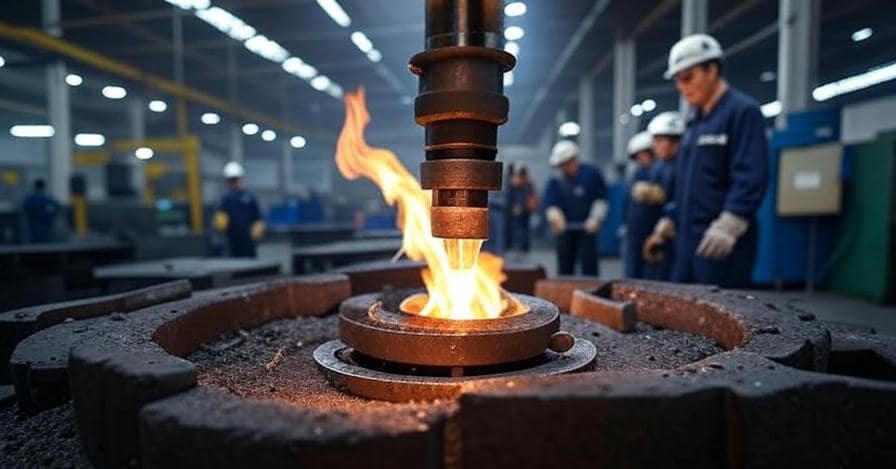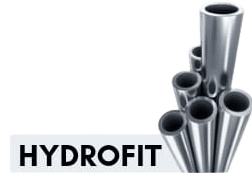+91-79045 61980 | Located in Chennai, TN
Annealing Process for Seamless Hydraulic Tubes: Explained

Heat treatment is one of the most important step in making of seamless hydraulic tube. Among all heat treatment methods, annealing process of hydraulic tube is very common and critical. This process improves mechanical property of the tube, reduces internal stress, and makes the tube more workable and machinable. Without annealing, the tube may become brittle or difficult to use in hydraulic systems. In this article we are understanding the step by step procedure of annealing in hydraulic seamless pipe, and why it is so important for industries.
Preparation of Seamless Hydraulic Tube
Before annealing starts, tubes must be prepared properly. Preparation includes:
-
Cutting tube to required length.
-
Checking the outer surface for crack, dent or defect.
-
Ensuring tube is clean from dust and oil.
Only after this basic preparation, the tube is ready to go inside furnace. If preparation is not done, defect can increase during heating, which will spoil the quality of seamless pipe.
Annealing process of Hydraulic Tube: Heating Stage
Furnace Setup
First stage of annealing is heating. The tube is put inside furnace, which may be electrical, induction, or gas fired. Furnace is controlled so that heat is spread uniform all over the material.
Ramp-Up of Temperature
Temperature is not applied suddenly. It is increased slowly step by step till the required level is reached. If heating is too fast, thermal shock can damage tube and make it bend or crack. Proper ramp up ensures safety and stability in material.
This heating changes the internal grain structure of carbon steel seamless pipe or stainless steel seamless pipe, so that later steps of soaking and cooling can refine it further.
Soaking of Seamless Tube
After heating, the tube is kept at constant temperature for certain time, this is called soaking or dwelling. The purpose is to stabilize internal crystal structure and remove internal stress.
Soaking time depends on:
-
Diameter of tube
-
Grade of material
-
Desired property
For small diameter alloy steel seamless pipe, soaking may be short, but for large thick wall pipe it will take more time. During soaking, material achieves balanced structure which is later locked during cooling.
Controlled Cooling of Hydraulic Tube
Furnace Cooling
The most common method is to keep tube inside furnace and slowly reduce temperature. This controlled cooling prevents sudden contraction and avoids new stress formation.
Water Quenching (rare in annealing)
In some case, quenching is used, but that is mostly for hardening. For annealing, slow cooling is more effective.
Cooling stage decides how ductile and workable the tube will become. A properly annealed hydraulic seamless pipe will bend and machine easily without cracking.
Testing and Inspection After Annealing
Once tube is cooled, quality check is done. No heat treatment is considered complete without testing.
Microstructure Check
Sample is examined under microscope to see grain size and structure. Refined and uniform grain means process is successful.
Mechanical Test
Tensile and hardness tests are done to ensure tube is strong but also ductile.
Visual Inspection
Surface is checked with naked eye for scaling, crack or dent.
If any defect is found, tube may need reprocessing or rejection. Quality assurance is must for seamless pipe supplier to keep trust with customers.
Finishing of Seamless Tube
After annealing and testing, tube is sent for finishing. Finishing may include:
-
Cutting to final required length.
-
Surface treatment like pickling, passivation, or oiling to resist corrosion.
-
End facing and deburring for smooth edges.
After finishing, tubes are bundled and packed for shipping. Proper packing ensures no damage happens during transport.
Documentation of Process
Every lot of annealed tube is documented. Record includes:
-
Heating temperature profile.
-
Soaking time.
-
Cooling method.
-
Test reports and certificates.
This documentation is useful for traceability. If in future any defect is found, manufacturer can check the record and identify the root cause. Reliable stainless steel seamless pipe supplier always maintain such documents.
Why Annealing is Important in Seamless Tubes
Annealed tubes have many improved properties compared to non-annealed:
-
Higher ductility (easy to bend and form).
-
Reduced internal stress.
-
Better machinability during cutting and threading.
-
Uniform mechanical properties.
-
More reliable in hydraulic pressure condition.
Industries like automotive, oil and gas, power generation, and chemical plants demand annealed tubes because they need safety and consistency.
Annealing in Different Grades of Seamless Pipes
1. Carbon Steel Seamless Pipe
Annealing makes it soft and machinable, good for automobile brake lines, fuel lines, and general hydraulics.
2. Alloy Steel Seamless Pipe
Annealing balances hardness and toughness, suitable for boilers, refinery and power plant use.
3. Stainless Steel Seamless Pipe
Annealing removes internal stress and improves corrosion resistance. Widely used in pharma, chemical and food industry.
4. Galvanized Seamless Pipe
Even after zinc coating, annealing improves ductility. Used for outdoor, agriculture and water lines.
Industries Benefiting from Annealed Seamless Tubes
Automotive Industry
Brake lines, fuel injection, clutch system and exhaust lines all use annealed seamless tubes.
Oil and Gas
Pipelines and well casing need ductile and strong tubes for safety in high pressure drilling.
Power and Boiler
Annealed tubes are used in boiler heat exchanger where high temperature resistance is must.
Aerospace and Marine
Aircraft engine component and shipbuilding also depend on annealed stainless or nickel alloy tubes.
Advantages of Properly Annealed Tubes
Only one bullet list here:
-
Smooth machining and threading.
-
Reduced risk of crack during bending.
-
Longer service life in hydraulic system.
-
Better resistance to vibration and fatigue.
-
Higher safety margin for pressure application.
These benefits show why annealing is never skipped in making of hydraulic seamless pipe.
Wrapping up
Annealing is a precise heat treatment process that makes seamless hydraulic tubes ready for use in demanding industry. The process includes heating, soaking, controlled cooling, testing and finishing. Properly annealed seamless pipe has better ductility, machinability and reduced stress. This is why automobile, oil, power, and chemical sectors all rely on annealed tubes for their safe operation.
Choosing a reliable seamless hydraulic pipes supplier in India is important, because only certified supplier will provide annealed tubes with correct documentation and test report. In modern world, where safety and quality cannot be compromised, annealed seamless tubes are backbone for strong and efficient hydraulic system.


